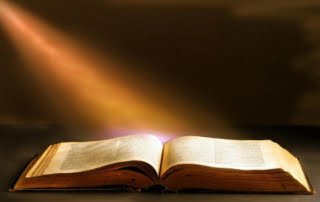The Tabernacle was as the Apostle Paul assures us, “a shadow of good things to come.” (Heb 10:1) In fact the whole nation of Israel with their laws and their religious services were an illustration or type (a “shadow”) of the “heavenly things”.(Heb 8:5; 1 Cor 10:11) Realizing God's care in making the "shadow" should give us great confidence in its correctness, that not one little bit of it shall fail until all shall be fulfilled (Matt. 5:18). But it should also spur a careful interest in God's plan so we might find the meaning of those shadows. Every single bit of law must be exactly performed in the type because it illustrated something more important coming afterwards in our day.
The sons of Kohath (from amongst the Levites) were the keepers of the Tabernacle (Sanctuary) where God dwelt among the children of Israel. The Kohathites had charge of the ark, table, candlestick, altars and all the holy vessels, bearing them upon their shoulders when God directed them to move to another location. (See Num 3:27-31; 7:9; Ex 13:21, 22)
Let us examine the Scripture texts that the questioner likely had in mind…
(Num 4:15 KJV) "And when Aaron and his sons have made an end of covering the sanctuary, and all the vessels of the sanctuary, as the camp is to set forward; after that, the sons of Kohath shall come to bear it: but they shall not touch any holy thing, lest they die. These things are the burden of the sons of Kohath in the tabernacle of the congregation."
(Num 4:18-20 KJV) "Cut ye not off the tribe of the families of the Kohathites from among the Levites: {19} But thus do unto them, that they may live, and not die, when they approach unto the most holy things: Aaron and his sons shall go in, and appoint them every one to his service and to his burden: {20} But they shall not go in to see when the holy things are covered, lest they die."
The Kohathites were permitted inside the Court of the Tabernacle only. As stated in the texts above, they could neither look at nor touch the “holy things” located inside the Holy or the Most Holy parts of the Tabernacle “lest they die”. Only the Priests and Under-priests (Aaron and his sons) were permitted to enter inside to see its glories and its beauties. From the type we see that Aaron foreshadowed our Lord Jesus and Aaron’s sons foreshadowed those following in the footsteps of Jesus, those called of God. (Heb 5:4, 5; 3:1, 2; 1 Pet 2:21)
The general consecration of all the Levites denotes holy living and obedience to God. However, the Kohathites could not touch the holy things of the Tabernacle unless they were covered and presented to them by the Priests beforehand. These Levites could not see into the Tabernacle and could not appreciate or enjoy the privileges of the fully consecrated Priests. They could not understand the glorious truths represented inside. These “deep things of God," which can be seen only from the light of the Golden Candlestick inside the Holy, symbolized the enlightenment of the Holy Spirit. "But the natural man receiveth not the things of the Spirit of God: for they are foolishness unto him: neither can he know them, because they are spiritually discerned." (1 Cor 2:10, 14) The Priests could describe these things to the Levites, but the Levites could not fully comprehend or see their beauty. The reality of this picture applies to fully consecrated believers today. General church attenders (people living good, moral, obedient lives) cannot understand the deep things of God, only consecrated, followers of Jesus Christ can. ”I beseech you therefore, brethren, by the mercies of God, that ye present your bodies a living sacrifice, holy, acceptable unto God, which is your reasonable service. And be not conformed to this world: but be ye transformed by the renewing of your mind, that ye may prove what is that good, and acceptable, and perfect, will of God." (Rom 12:1, 2) The consecrated Priests could enjoy taking charge of the Golden Candlestick—keeping it trimmed and burning, preparing and eating the Showbread and offering a sweet savor to God on the Incense Altar. The Priests had the high privilege of offering sacrifices (themselves; foreshadowed in the animal sacrifices of “bulls and goats”, Heb 9:11-16; 10:4) to atone for the sins of the entire nation of Israel. These signify the light, the truth, the spiritual privileges, prayers and communion which the Christian receives from God upon making a covenant of sacrifice with Him and being begotten of His spirit through the merit of Jesus Christ. (John 14:6; Eph 1:5, 6; 1 Pet 1:3-5)
In summary, the Kohites could not touch uncovered furniture of the Tabernacle because the Kohites pictured general church attenders of today. Only consecrated, footstep followers of Jesus Christ can see this furniture as the furniture represents the truths, the heart-understandings, and the walks of believers who have received the Holy Spirit of God.








